-
 Bitcoin
Bitcoin $76,444.7530
-3.77% -
 Ethereum
Ethereum $1,473.8355
-5.46% -
 Tether USDt
Tether USDt $0.9991
-0.08% -
 XRP
XRP $1.7965
-5.51% -
 BNB
BNB $553.4919
-0.36% -
 USDC
USDC $0.9999
-0.02% -
 Solana
Solana $105.2981
-1.74% -
 TRON
TRON $0.2303
0.81% -
 Dogecoin
Dogecoin $0.1422
-4.62% -
 Cardano
Cardano $0.5587
-4.41% -
 UNUS SED LEO
UNUS SED LEO $8.9866
1.01% -
 Toncoin
Toncoin $2.9933
-4.74% -
 Chainlink
Chainlink $10.9113
-4.81% -
 Stellar
Stellar $0.2215
-4.76% -
 Avalanche
Avalanche $16.1163
-3.29% -
 Sui
Sui $1.9371
-3.89% -
 Shiba Inu
Shiba Inu $0.0...01065
-6.69% -
 Hedera
Hedera $0.1469
-3.29% -
 MANTRA
MANTRA $6.2058
-1.53% -
 Dai
Dai $1.0000
0.01% -
 Bitcoin Cash
Bitcoin Cash $269.3457
-2.08% -
 Polkadot
Polkadot $3.3773
-5.87% -
 Litecoin
Litecoin $69.2204
-2.50% -
 Ethena USDe
Ethena USDe $0.9986
-0.01% -
 Bitget Token
Bitget Token $4.0180
-3.25% -
 Pi
Pi $0.5649
-4.50% -
 Hyperliquid
Hyperliquid $11.1928
-2.80% -
 Monero
Monero $195.3885
-4.41% -
 OKB
OKB $50.9235
-0.59% -
 Uniswap
Uniswap $4.7688
-6.95%
What is the basic concept of KDJ indicator?
The KDJ indicator, used in crypto trading, predicts price movements with K, D, and J lines, signaling buy/sell opportunities based on market momentum and overbought/oversold conditions.
Apr 04, 2025 at 08:42 pm
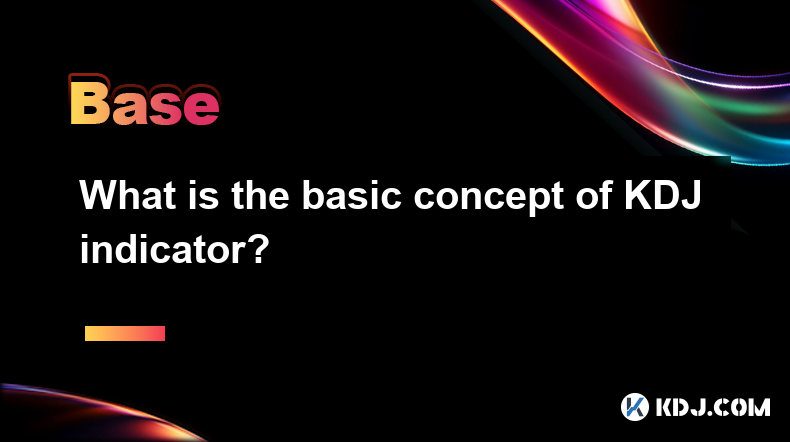
The KDJ indicator, also known as the Stochastic Oscillator, is a popular technical analysis tool used in the cryptocurrency market to predict price movements and identify potential trading opportunities. The KDJ indicator is based on the premise that as prices rise, closing prices tend to be closer to the upper end of the price range, and as prices fall, closing prices tend to be closer to the lower end of the price range. The KDJ indicator consists of three lines: the K line, the D line, and the J line. These lines are calculated using the highest high, lowest low, and closing prices over a specified period.
The K line represents the current market momentum, while the D line is a moving average of the K line, smoothing out its fluctuations. The J line is a more sensitive indicator, calculated as three times the difference between the K and D lines. The KDJ indicator oscillates between 0 and 100, with readings above 80 indicating overbought conditions and readings below 20 indicating oversold conditions. Traders use the KDJ indicator to identify potential buy and sell signals, as well as to confirm the strength of a trend.
How is the KDJ Indicator Calculated?
The calculation of the KDJ indicator involves several steps. First, the highest high (HH) and lowest low (LL) over a specified period are determined. Then, the raw K value is calculated using the following formula:
- K = (Current Close - LL) / (HH - LL) * 100
Next, the D value is calculated as a simple moving average of the K value over a specified period, typically 3 periods:
- D = (K(t) + K(t-1) + K(t-2)) / 3
Finally, the J value is calculated as follows:
- J = 3D - 2K
The K, D, and J values are then plotted on a chart, with the K and D lines typically displayed as solid lines and the J line as a dotted line. The period used for the calculation can be adjusted based on the trader's preference and the specific cryptocurrency being analyzed.
Interpreting the KDJ Indicator
The KDJ indicator can be interpreted in several ways to identify potential trading opportunities. One common approach is to look for crossovers between the K and D lines. When the K line crosses above the D line, it is considered a bullish signal, suggesting that the price may rise. Conversely, when the K line crosses below the D line, it is considered a bearish signal, suggesting that the price may fall.
Another way to interpret the KDJ indicator is to look for overbought and oversold conditions. When the KDJ indicator rises above 80, it suggests that the cryptocurrency may be overbought and due for a price correction. Conversely, when the KDJ indicator falls below 20, it suggests that the cryptocurrency may be oversold and due for a price rebound.
Traders can also use the J line to identify potential turning points in the market. When the J line moves above 100 or below 0, it suggests that the market may be reaching an extreme and a reversal could be imminent. However, it's important to note that the J line is more sensitive and can generate false signals, so it should be used in conjunction with other indicators and analysis techniques.
Using the KDJ Indicator in Cryptocurrency Trading
The KDJ indicator can be a valuable tool for cryptocurrency traders looking to identify potential entry and exit points. Here are some ways to use the KDJ indicator in your trading strategy:
- Look for bullish and bearish crossovers between the K and D lines to identify potential buy and sell signals.
- Monitor overbought and oversold conditions to anticipate potential price reversals.
- Use the J line to identify potential turning points in the market, but be cautious of false signals.
- Combine the KDJ indicator with other technical indicators, such as moving averages and the Relative Strength Index (RSI), to confirm signals and increase the probability of successful trades.
- Adjust the period of the KDJ indicator based on the specific cryptocurrency and time frame you are trading to optimize its effectiveness.
It's important to remember that no single indicator can predict market movements with 100% accuracy. The KDJ indicator should be used as part of a comprehensive trading strategy that takes into account other factors, such as market trends, news events, and risk management techniques.
Limitations and Considerations of the KDJ Indicator
While the KDJ indicator can be a useful tool for cryptocurrency traders, it's important to be aware of its limitations and consider them when using it in your trading strategy. Some key considerations include:
- The KDJ indicator is a lagging indicator, meaning it is based on past price data and may not always accurately predict future price movements.
- The KDJ indicator can generate false signals, especially in choppy or sideways markets, so it's important to use it in conjunction with other indicators and analysis techniques.
- The effectiveness of the KDJ indicator can vary depending on the specific cryptocurrency and time frame being traded, so it's important to test and optimize its settings for your particular trading strategy.
- The KDJ indicator should not be used in isolation but rather as part of a comprehensive trading strategy that takes into account other factors, such as market trends, news events, and risk management techniques.
By understanding the basic concept of the KDJ indicator, how it is calculated, and how to interpret and use it in your cryptocurrency trading strategy, you can potentially improve your ability to identify profitable trading opportunities and manage risk effectively.
Common Questions Related to the KDJ Indicator
Q: What is the difference between the KDJ indicator and the Stochastic Oscillator?
A: The KDJ indicator and the Stochastic Oscillator are essentially the same indicator, with the KDJ being a variation of the Stochastic Oscillator that is more commonly used in Asian markets. The main difference is that the KDJ indicator includes an additional J line, which is calculated as three times the difference between the K and D lines. This J line can be used to identify potential turning points in the market.
Q: Can the KDJ indicator be used for all cryptocurrencies?
A: Yes, the KDJ indicator can be used for all cryptocurrencies. However, its effectiveness may vary depending on the specific cryptocurrency and time frame being traded. It's important to test and optimize the KDJ indicator's settings for each cryptocurrency and time frame to ensure its effectiveness in your trading strategy.
Q: How can I combine the KDJ indicator with other technical indicators?
A: The KDJ indicator can be combined with other technical indicators to confirm signals and increase the probability of successful trades. Some common indicators to use in conjunction with the KDJ indicator include moving averages, the Relative Strength Index (RSI), and the Moving Average Convergence Divergence (MACD). For example, you could use a moving average crossover to confirm a bullish or bearish signal generated by the KDJ indicator, or use the RSI to confirm overbought or oversold conditions identified by the KDJ indicator.
Q: How often should I adjust the period of the KDJ indicator?
A: The period of the KDJ indicator should be adjusted based on the specific cryptocurrency and time frame you are trading. As a general rule, shorter periods (e.g., 9 or 14) are more suitable for short-term trading, while longer periods (e.g., 21 or 34) are more suitable for longer-term trading. It's a good idea to test different periods and optimize them for your particular trading strategy and the cryptocurrency you are trading.
Q: Can the KDJ indicator be used for day trading cryptocurrencies?
A: Yes, the KDJ indicator can be used for day trading cryptocurrencies. However, it's important to use a shorter period (e.g., 9 or 14) to generate more timely signals and to combine the KDJ indicator with other technical indicators and analysis techniques to confirm signals and manage risk effectively. Day trading cryptocurrencies can be highly volatile and risky, so it's crucial to have a well-defined trading strategy and to practice proper risk management techniques.
Disclaimer:info@kdj.com
The information provided is not trading advice. kdj.com does not assume any responsibility for any investments made based on the information provided in this article. Cryptocurrencies are highly volatile and it is highly recommended that you invest with caution after thorough research!
If you believe that the content used on this website infringes your copyright, please contact us immediately (info@kdj.com) and we will delete it promptly.
- "Cardano (ADA) Price Could Dip Below $0.60, Following Previous Market Cycle"
- 2025-04-09 05:10:12
- BONK, the well-known meme coin, has risen over 35% in the last week, attracting meme coin investors in the market. So, what caused this rally?
- 2025-04-09 05:10:12
- Bitcoin (BTC) Investors May Not Exactly Feel It, but BTC Has Been a Relatively Good Bet
- 2025-04-09 05:05:12
- Donald's Bitcoin (DONBTC) Could Turn Early Investors into Multi-Millionaires, Like Shiba Inu (SHIB) and Dogecoin (DOGE) Did
- 2025-04-09 05:05:12
- 6 Upcoming Kraken Listings That Could Be the Next Big Thing in Crypto
- 2025-04-09 05:00:13
- COTI Unveils New Privacy-Focused Blockchain to Reshape Web3 Transactions
- 2025-04-09 05:00:13
Related knowledge
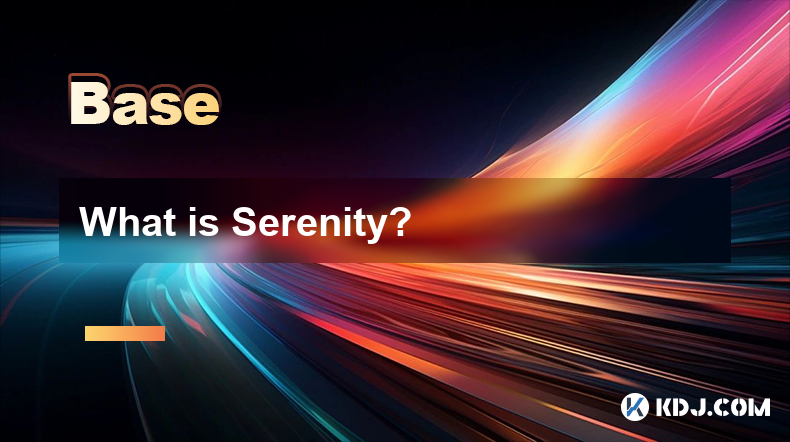
What is Serenity?
Apr 08,2025 at 02:00pm
Serenity, also known as Ethereum 2.0, represents a major upgrade to the Ethereum blockchain. This ambitious project aims to address the scalability, security, and sustainability issues faced by the current Ethereum network. Serenity is not a single update but a series of upgrades that will transform Ethereum into a more efficient and robust platform. Th...
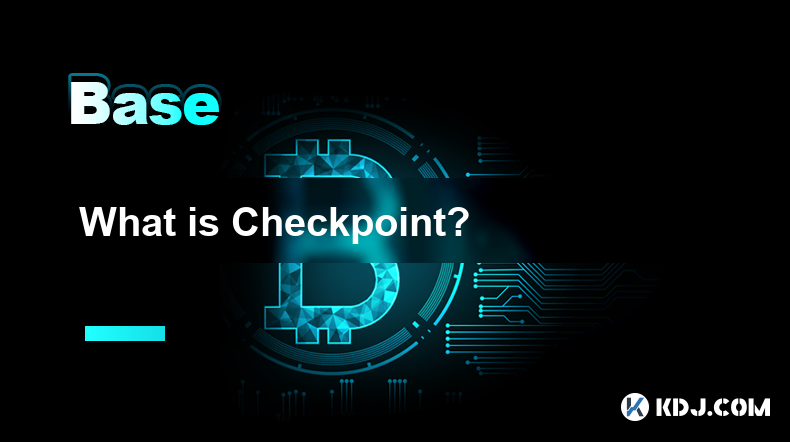
What is Checkpoint?
Apr 08,2025 at 05:08pm
A checkpoint in the context of blockchain and cryptocurrencies is a mechanism used to enhance the security and efficiency of a blockchain network. It serves as a snapshot of the blockchain at a specific point in time, which can be used to validate the integrity of the chain and prevent certain types of attacks. Checkpoints are particularly important in ...

What is Finality Gadget?
Apr 08,2025 at 04:14am
The Finality Gadget is a crucial component in the architecture of certain blockchain networks, particularly those that utilize a hybrid consensus mechanism. It plays a pivotal role in ensuring the finality of transactions, which means that once a transaction is confirmed, it cannot be altered or reversed. This article delves into the intricacies of the ...
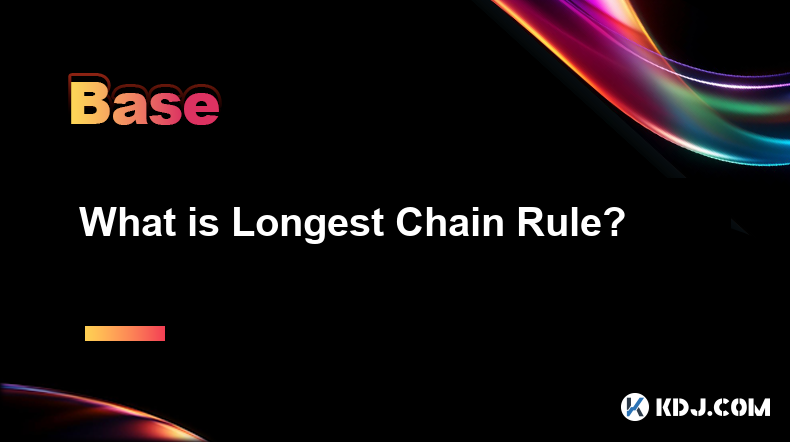
What is Longest Chain Rule?
Apr 08,2025 at 07:50am
The Longest Chain Rule is a fundamental concept in blockchain technology, particularly in the context of cryptocurrencies like Bitcoin. This rule is crucial for maintaining the integrity and security of the blockchain network. In essence, the Longest Chain Rule dictates that the valid blockchain is the one with the most cumulative proof-of-work, which i...

What is Chain Reorganization?
Apr 08,2025 at 03:08pm
What is Chain Reorganization? Chain reorganization, often referred to as a 'reorg,' is a fundamental concept in blockchain technology that can significantly impact the integrity and operation of a blockchain network. Chain reorganization occurs when a blockchain network replaces a previously accepted block or series of blocks with a new set of blocks, l...
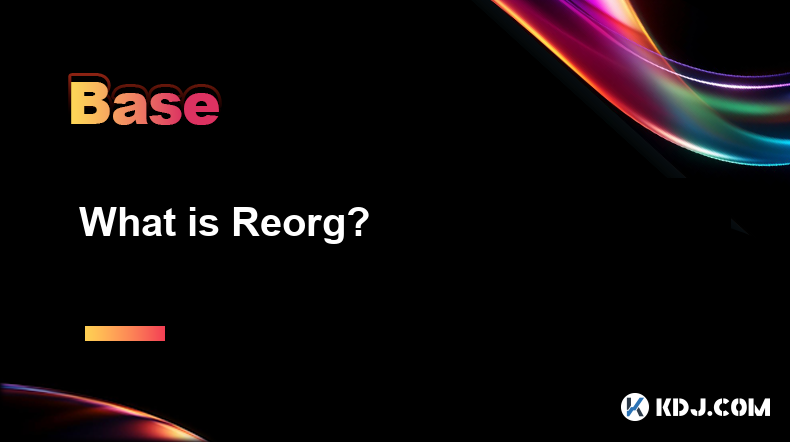
What is Reorg?
Apr 08,2025 at 11:08pm
What is Reorg?In the world of cryptocurrencies, particularly those that operate on blockchain technology, the term Reorg or Blockchain Reorganization is a critical concept that users and developers need to understand. A reorg refers to a situation where the blockchain undergoes a reorganization of its blocks, which can lead to changes in the accepted ve...

What is Serenity?
Apr 08,2025 at 02:00pm
Serenity, also known as Ethereum 2.0, represents a major upgrade to the Ethereum blockchain. This ambitious project aims to address the scalability, security, and sustainability issues faced by the current Ethereum network. Serenity is not a single update but a series of upgrades that will transform Ethereum into a more efficient and robust platform. Th...

What is Checkpoint?
Apr 08,2025 at 05:08pm
A checkpoint in the context of blockchain and cryptocurrencies is a mechanism used to enhance the security and efficiency of a blockchain network. It serves as a snapshot of the blockchain at a specific point in time, which can be used to validate the integrity of the chain and prevent certain types of attacks. Checkpoints are particularly important in ...

What is Finality Gadget?
Apr 08,2025 at 04:14am
The Finality Gadget is a crucial component in the architecture of certain blockchain networks, particularly those that utilize a hybrid consensus mechanism. It plays a pivotal role in ensuring the finality of transactions, which means that once a transaction is confirmed, it cannot be altered or reversed. This article delves into the intricacies of the ...

What is Longest Chain Rule?
Apr 08,2025 at 07:50am
The Longest Chain Rule is a fundamental concept in blockchain technology, particularly in the context of cryptocurrencies like Bitcoin. This rule is crucial for maintaining the integrity and security of the blockchain network. In essence, the Longest Chain Rule dictates that the valid blockchain is the one with the most cumulative proof-of-work, which i...

What is Chain Reorganization?
Apr 08,2025 at 03:08pm
What is Chain Reorganization? Chain reorganization, often referred to as a 'reorg,' is a fundamental concept in blockchain technology that can significantly impact the integrity and operation of a blockchain network. Chain reorganization occurs when a blockchain network replaces a previously accepted block or series of blocks with a new set of blocks, l...

What is Reorg?
Apr 08,2025 at 11:08pm
What is Reorg?In the world of cryptocurrencies, particularly those that operate on blockchain technology, the term Reorg or Blockchain Reorganization is a critical concept that users and developers need to understand. A reorg refers to a situation where the blockchain undergoes a reorganization of its blocks, which can lead to changes in the accepted ve...
See all articles






















































































